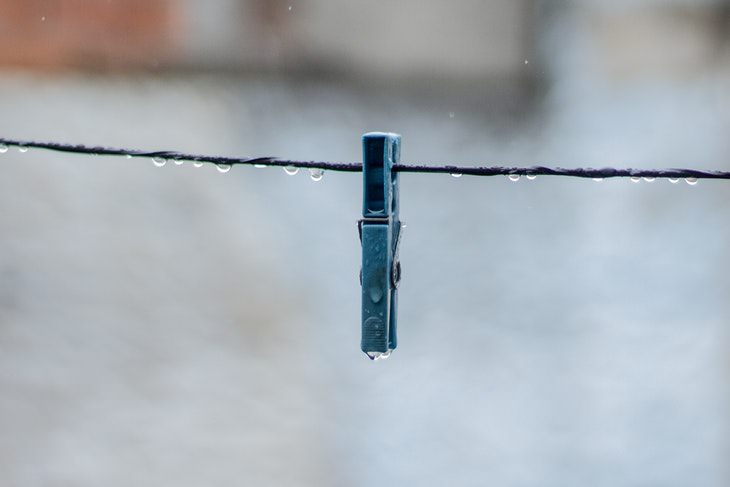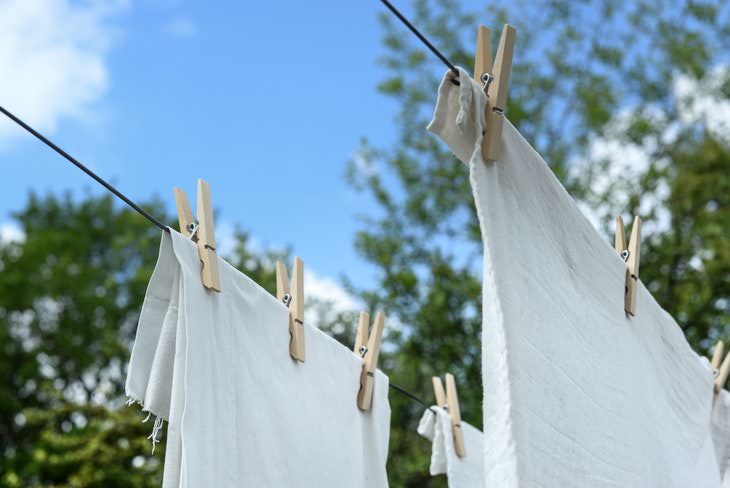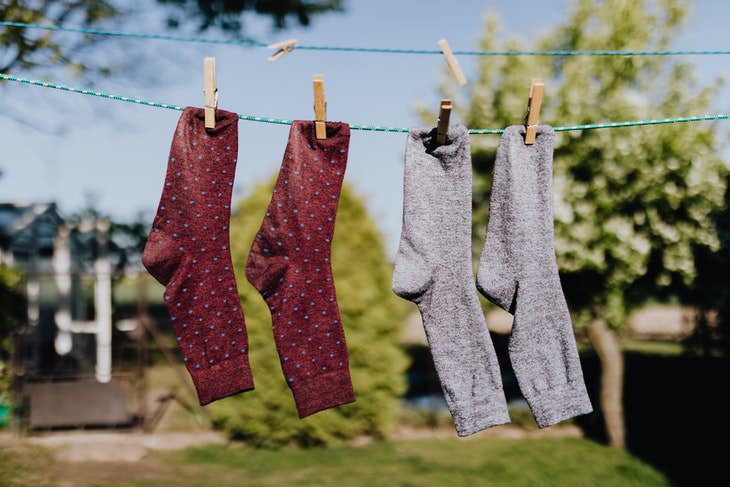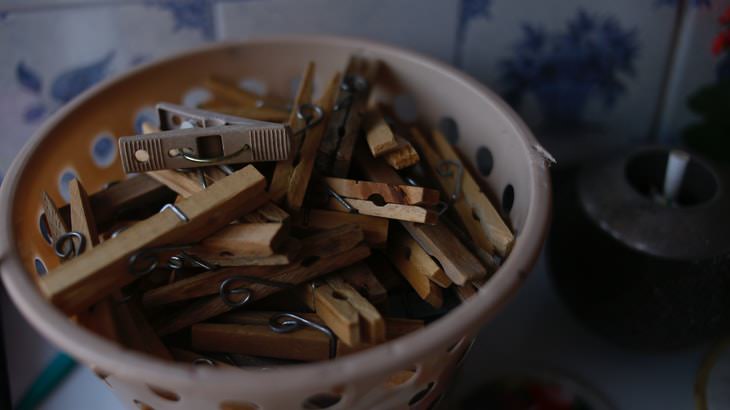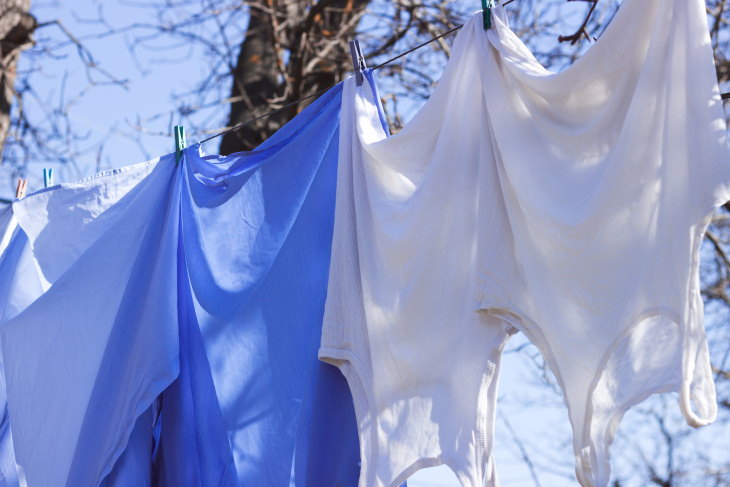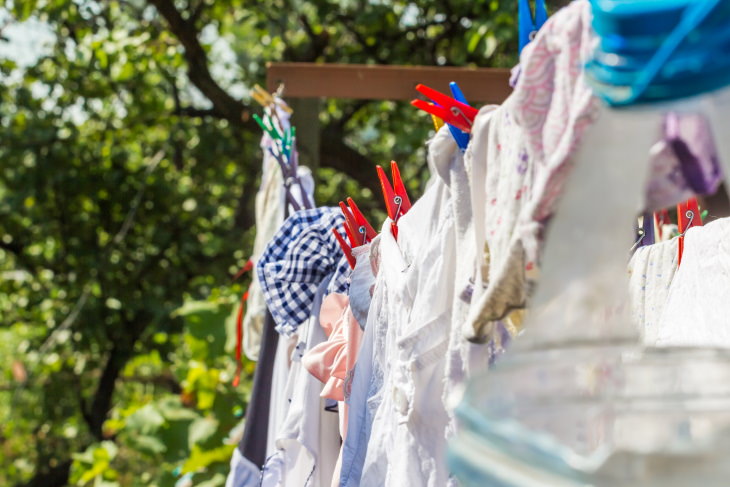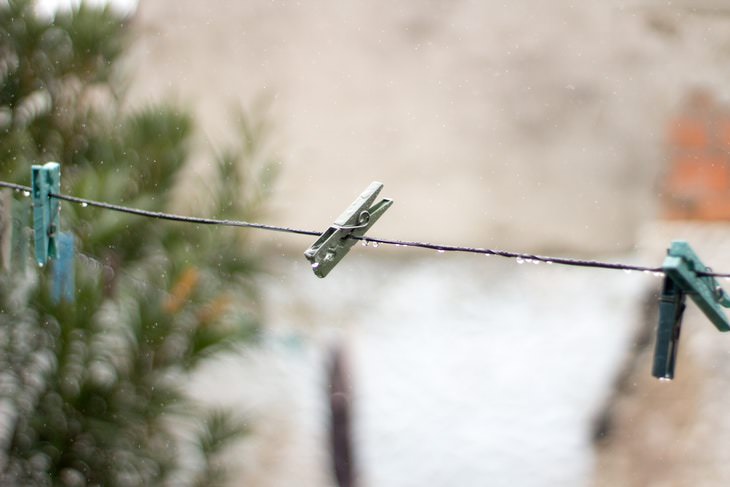1. For starters, wipe down the clothesline
A dirty clothesline could leave a line of dirt and grime on your freshly-cleaned laundry. This doesn't always happen, but it's better to be safe than sorry, especially if you're dealing with light-colored fabrics that show stains right away. So, simply wipe down the clothesline with a clean cloth before hanging out the laundry to prevent this from happening.
2. Color-code your laundry
When it comes to air-drying your laundry, it's good to have a similar philosophy as you do when loading the washing machine - stick to similar colors to prevent staining. Even though most washing machines nowadays do a marvelous job wringing out the clothes, which minimizes the risks of color transfer, hanging dark or brightly-colored clothing next to your white sheets or tops could still end up staining them, so it's best to stick to like colors.
3. Hang socks by the toes
When it comes to air-drying, tactical positioning is everything. For example, if you hang socks by their heels, it may stretch them out in no time, and they will end up becoming loose and start falling off your feet, and nobody needs that. Instead, hang them by their toes to prevent stretching. This way, they will dry out much faster, too!
4. Store clothespins in a separate container indoors
Clothespins are commonly made of wood and have many metal parts, and both of these materials are susceptible to water damage, so you would ideally want to protect them from the rain and snow. Sometimes, the metal pins can start to rust, too, which can ruin light-colored garments by staining them if you end up using these pins. So, instead of leaving the clothespins on the clothesline, store them in a little bucket or any container indoors or in the shed to prevent any water damage.
5. Hang tops and pants upside-down
Hang out other garments strategically, too, to minimize misshaping or wrinkling of the clothing. All sheets, tops, and pants should be placed upside down and pinned at the ends for wrinkle-free and fast drying. If your garment is made of silk or any other delicate fabric, dry it by folding it in the middle and hanging that way to avoid stretching out.
Wool and other stretchy woven items, such as woven socks, hats, and sweaters, on the other hand, should be dried in a flat position, otherwise they can lose their shape and shrink in some places. So, dry sweaters and other woven clothing by laying it flat on a table or a drying rack for clothes, and make sure not to leave those sleeves hanging from the sides either, laying them flat beside the body of the garment instead.
6. Pin clothes together to save clothespins
Ran out of clothespins, but still have some laundry left to hang out? No worries, you can easily cut down on the number of clothespins you need nearly by half with this trick. Simply link the corners of two items that hang side by side with a single clothespin, and you've got yourself one unused pin that you'll be able to reuse for a different garment.
In addition, you can pin two items one on top of each other on a single pin if the items are made of a lighter fabric, e.g. in the case of undies, thin-knit socks, dishcloths, and kitchen towels.
7. Any weather is good weather!
Contrary to popular belief, drying clothes the natural way isn't just for sunny weather. In fact, the dry and crisp winter air is just as good at drying your laundry as the summer heat, just try it. In fact, the only time we'd recommend you opt for the tumble dryer instead of air-drying your laundry is rainy weather, for reasons that seem obvious. That said, if your clothesline is under a roof, we don't see any reason why you shouldn't air-dry your clothes all year round.
Share this article with those who could find it useful!

